Olympus OM-D E-M1X Review
Olympus OM-D E-M1X Review
One for action shooters – but it comes at a price
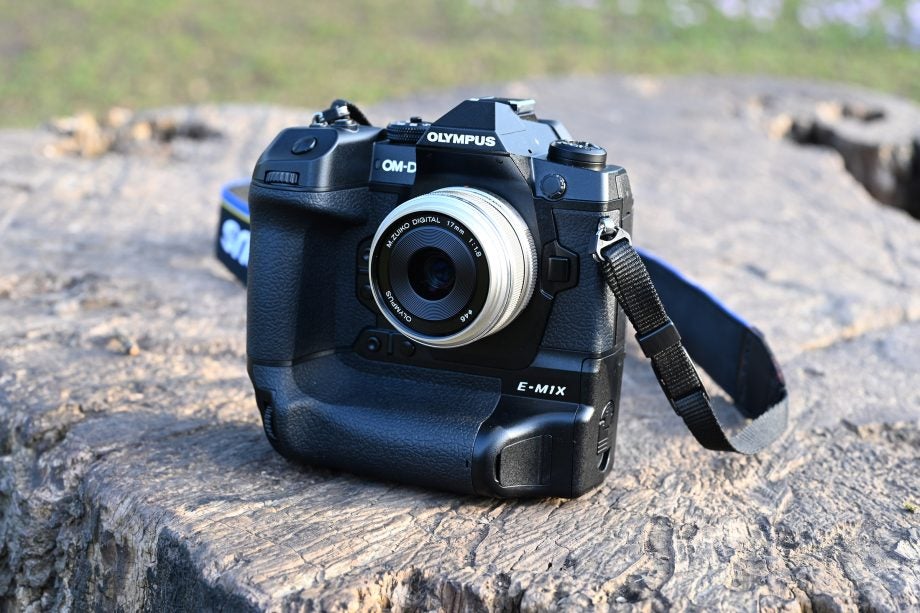
Verdict
The OM-D E-M1X is a fantastic camera for those who like to shoot sports, wildlife and action. But at this price, it's certainly in niche territory.
Pros
- Up to 60fps burst shooting
- Fantastic battery life
- Great handling
Cons
- Small sensor
- Limited range of high quality telephoto lenses
- Expensive
Key Specifications
- Review Price: £2799.99
- 20-megapixel Four Thirds sensor
- 60fps burst mode (with AF locked) or 18fps with C-AF
- 2.36m-dot electronic viewfinder
- 5-axis image stabilisation (rated to 7 stops)
- 80-megapixel "tripod" mode, 50-megapixel "handheld" high res shots
- 2580-shot battery life
What is the Olympus OM-D E-M1X?
As a general rule of thumb, the more professional the camera, the bigger the sensor used to be. However, Olympus’ flagship Micro Four Thirds cameras have blurred those lines over the past decade.
Wildlife and sports photographers have long been fans of Micro Four Thirds speedsters such as the Olympus OM-D E-M1 Mark II, which combine impressive burst rates with excellent tracking autofocus.
And now, in a world that’s brimming with full-frame powerhouses, Olympus has marked its centenary year with a new pro-friendly take on the (relatively) small Four Thirds sensor.
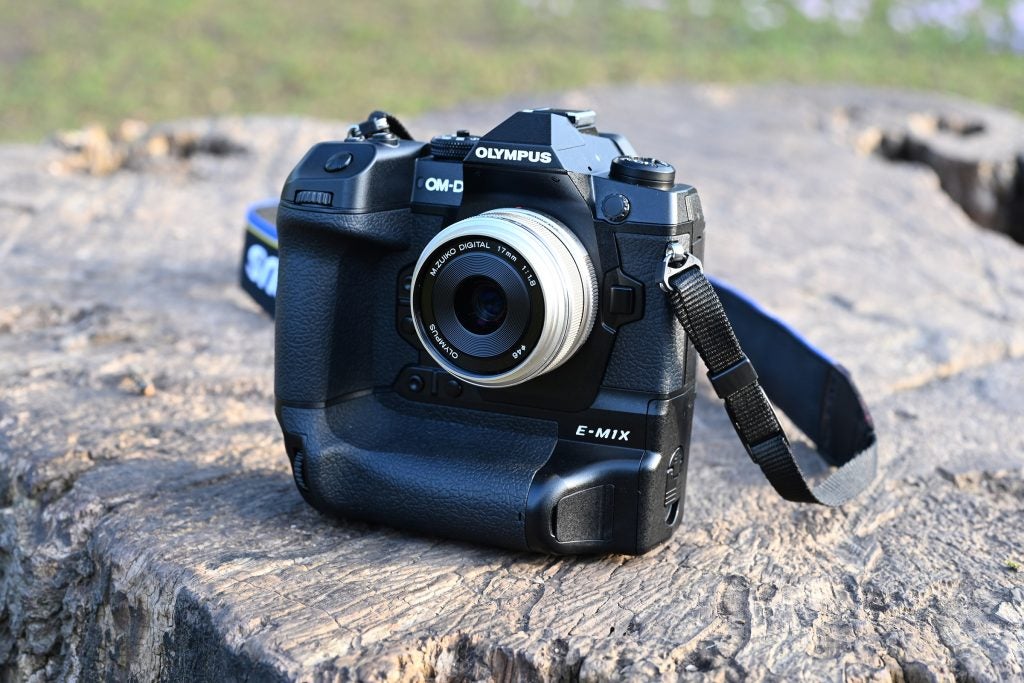
The E-M1X builds on the specs of the E-M1 Mark II and goes one step further to produce an entirely new strand in the Olympus lineup. For this beefed up powerhouse, you won’t get much change from £3000 – not exactly an impulse buy, then.
But if you’re in the market for a camera that’s perfectly primed for wildlife, sports and action – including trains (more on that later) – then it could just be the one you need. Let’s take a look at what it has to offer.
Related: Best mirrorless cameras
Olympus OM-D E-M1X – Design and features
At the heart of the E-M1X is a 20.4-megapixel Four Thirds sensor. It might feel a little unusual for a professional-level 2019 camera to be packing a unit that’s about 25% the size of a full-frame sensor, but there are plenty of benefits to using a smaller sensor.
First, while this isn’t a small camera, there’s no escaping the fact that the system as a whole would be far bigger if the E-M1X was housing a full-frame sensor.
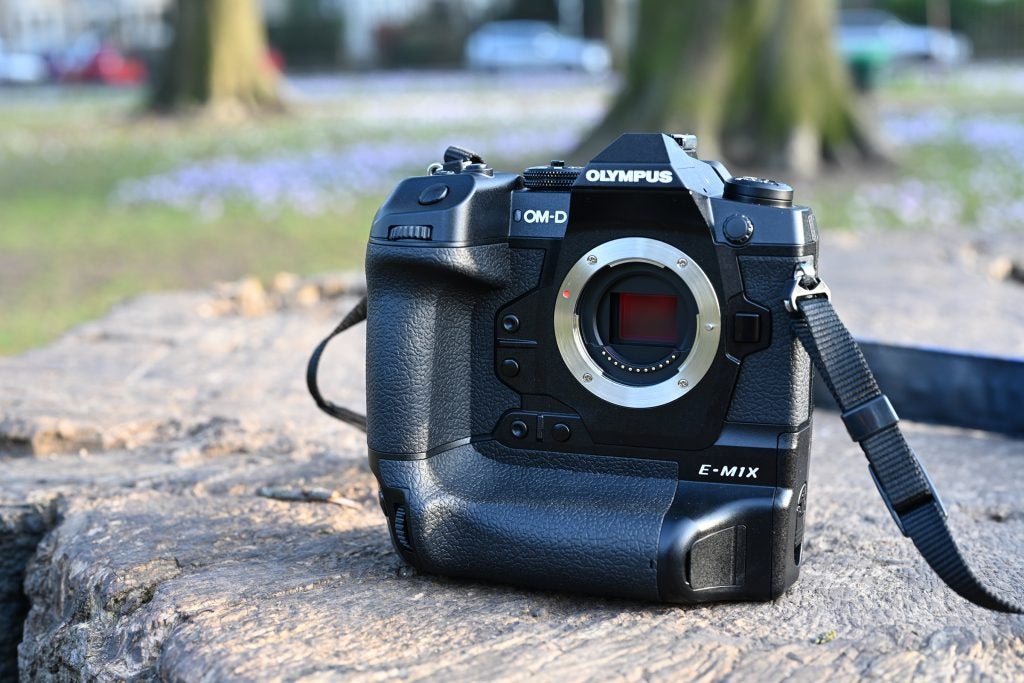
It’s one of the only cameras to feature an incorporated grip – in other words, one that you can’t take off when you want to make the camera smaller and lighter. That makes it large, but compared to cameras such as the Nikon D5 or the Canon EOS 1DX, it isn’t enormous.
The grip gives it a square shape, with a duplicate set of controls that can be used when holding the camera in portrait orientation. It also means that the E-M1X can house two batteries, for a rating of 2,580 shots – pretty much unheard of on a mirrorless camera.
Using a small sensor is advantageous for wildlife and sports photographers because you can get closer to the action with shorter (and smaller and lighter) lenses. The “crop factor” on a camera such as this is 2x. This means any lens you place on it doubles in length; a 200mm becomes a 400mm, and so on.
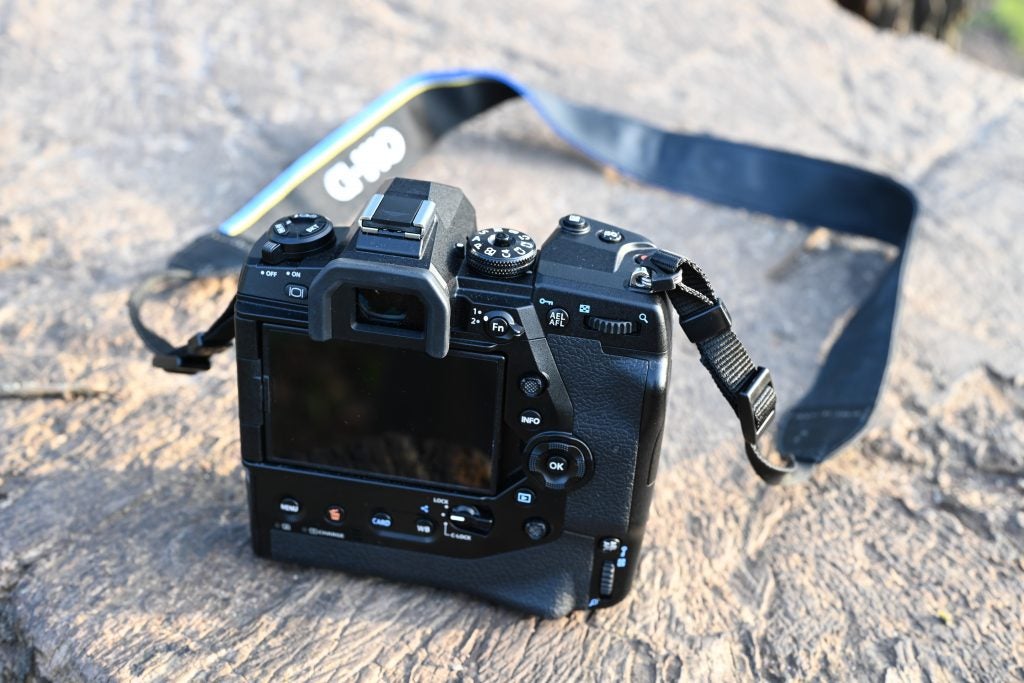
Also impressive is the fact that you can shoot at up to 60fps at full resolution and in Raw format, so long as you’re happy to fix the focus on the first frame. Switch to tracking focus, and you’ll still have a perfectly respectable 18fps.
Replete with a variety of dials and buttons, there’s direct access to pretty much any setting you could imagine – including one for AF mode, one for drive mode, ISO, and so on.
Anything that isn’t covered by a direct button can be reached via the quick menu. If you don’t like the way that the E-M1X is set up by default, there’s plenty of scope for customisation via the main menu, which is a major plus point for the intended pro user.
The Dual SD card slots are both compatible with the faster UHS-II type of card, too.
Related: Best camera
Olympus OM-D E-M1X – Screen and viewfinder
The E-M1X has a fully articulating touchscreen, making it useful for composing from virtually any angle you can think of.
You can use it to set various functions including the autofocus point, as well as the options in the quick menu. The number of buttons on the camera makes it ideal for a button-and-screen combo attack when changing settings – or, if you prefer, you could ignore the touch functionality altogether.
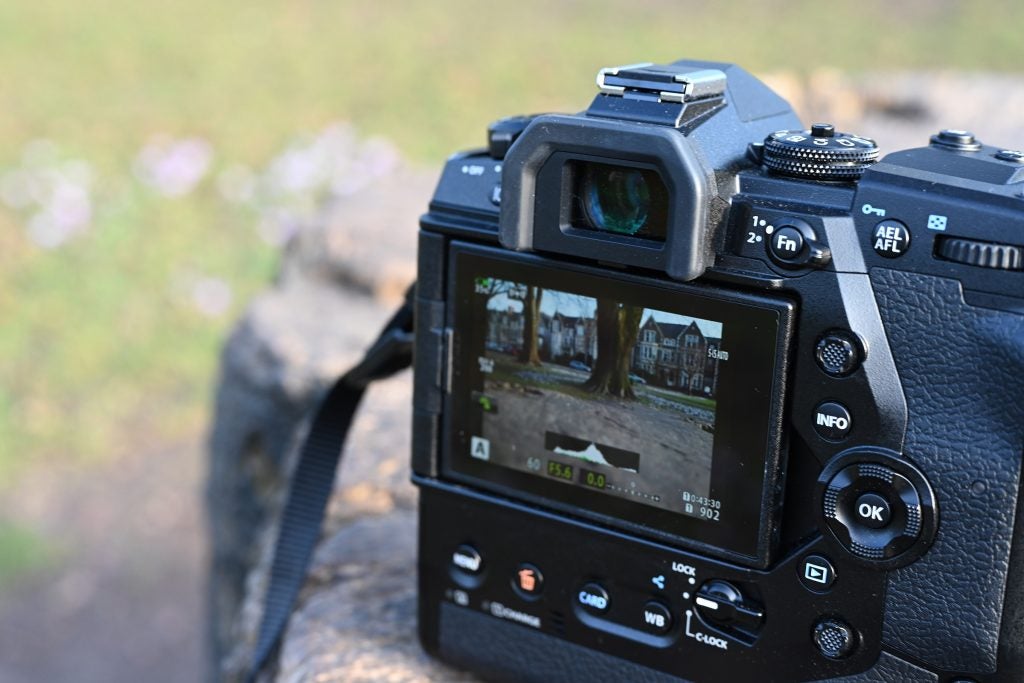
The electronic viewfinder isn’t the largest or of the highest resolution on the market, but it does offer the highest magnification (0.83x). Many of its rivals come with 3.7m-dot finders, but with the E-M1x you’ll have to make do with a 2.36m-dot device. Although this may appear a significant difference, in isolation it isn’t likely to be hugely obvious to most – especially if you’ve never used one of those higher-resolution ‘finders.
On the plus side, keeping resolution on the low side helps to keep performance lag-free – and, on the whole, it does a superb job of displaying accurate colours and providing plenty of useful information, such as a level indicator and a histogram (which you can turn off via the customisation options, if you like).
Olympus OM-D E-M1X – Performance
The E-M1X is very heavily targeted towards sports, wildlife and action photographers. As such, focusing needs to be spot on – and, on the whole, it does a very good job.
It copes well keeping up with rapidly moving subjects, especially if that subject follows a reasonably predictable pattern of movement.

Moments such as this can be captured with 18fps and C-AF tracking.
With focus set to C-AF (continuous autofocus), you can set an option in the main menu to detect specific types of subjects. For now, this is limited to trains, aeroplanes and motorsports (cars and motorcycles).
Olympus suggests that other types of subjects could be added via a firmware upgrade in the future – animals being an obvious choice. The camera does a good job of detecting those subjects, but if it can’t find what it’s looking for, it will simply use standard continuous autofocus.

The E-M1X is a good choice for fans of wildlife photography.
In more ordinary situations autofocusing is also quick and accurate, with very few cases of false positives.
Olympus OM-D E-M1X – Image quality
There’s much to love about the E-M1X when it comes to image quality, with several innovative features that prove genuinely useful.

Here we can see the effect of the Live ND filter. Using a 60-second exposure, the water has been smoothed and blurred, without overexposing the shot. By contrast, a 30-second exposure taken immediately after this with the Live ND filter switched off is a completely white frame.
One of those is the “Live ND” feature, which you can use while shooting long exposures to recreate the look of using physical ND filters. It merges together a series of shorter exposures to create the effect, which means it doesn’t work quite as well in extremely bright situations – but at sunset, for example, it’s remarkably effective at creating smooth water and so on.

The handheld High Resolution mode has done a pretty good job here, considering the flowers were moving slightly in the breeze.
Another interesting feature is the High Resolution mode. It includes two options – one for shooting handheld, and another for shooting with a tripod. Again, it merges together several images to get the most possible detail. With the tripod option selected, you’ll get huge 80-megapixel Raw files.
Obviously, this isn’t one you’ll be using for every shot, but for certain situations – such as landscape and macro mode – it’s worth switching on. The handheld mode also works very well, with minimal ghosting visible in most situations, especially if the subject doesn’t feature any moving elements.

In the JPEG image, the highlights are blown out, but the equivalent Raw file contains enough information to bring back the detail post-processing.
Otherwise, in standard shooting modes, the overall impression of detail is very good when looking at images at normal printing or web sizes (A4 or below).
If you examine at 100%, sharpness isn’t as good as cameras such as the Nikon Z7, but how often folk will actually do that is questionable. Colours are well saturated but remain realistic, while dynamic range is generally very good.

High ISO shooting in low light isn’t as good as with some of its larger framed rivals. This image was shot at ISO 6400 and there’s a noticeable loss of detail, even when viewed at relatively small sizes.
Despite the (relatively) small sensor, the E-M1x copes fairly well with low light. It’s helped by the fact that up to 7-stops of image stabilisation means that you can restrict ISO to lower numbers to keep noise to a minimum.
Why buy the Olympus OM-D E-M1X?
Although Olympus has undoubtedly created a well-performing camera, a big question mark hangs over the intended audience. For a long time, Olympus has traded on the idea that the Micro Four Thirds format is small and compact – yet with the E-M1X, we’ve got a beast of a camera that seems to throw those ideals out of the window.
Yes, there are advantages to a permanent grip – most notably to battery life – but it perhaps would have been preferable for it to be removable for those who crave a smaller size of camera for travel. That said, compare the E-M1X and a set of lenses with a Nikon D5 with a comparable set of lenses, and the size difference is pretty significant.
Still, there are arguably very few professionals shooting Micro Four Thirds – perhaps even less so now as Panasonic has made its claim for a slice of the full-frame pie with its recently announced S1 and S1R series.
While Panasonic is keeping its Micro Four Thirds models, it very much acknowledges that the audience for them is most likely to be enthusiasts. And if you’re not a professional, it seems unlikely that you’ll be willing to shell out the best part of £3000 for a camera, even one as capable as this.
These problems are further exacerbated by the lack of a diverse range of equally high-end lenses for shooting wildlife and sports.
For now, in the Olympus M.Zuiko “Pro” lens range, there’s just a 40-150mm f/2.8 and 300mm f/4 lens (giving you a 80-300mm and 600mm equivalent, respectively). A 1.4x teleconverter is available, with a 2x teleconverter expected later in the year, but that’s still a pretty limited lineup.
While we love the OM-D E-M1X’s performance, this is all means it’s likely to be consigned to the “niche” category.
Olympus OM-D E-M1X – The rivals
Panasonic G9
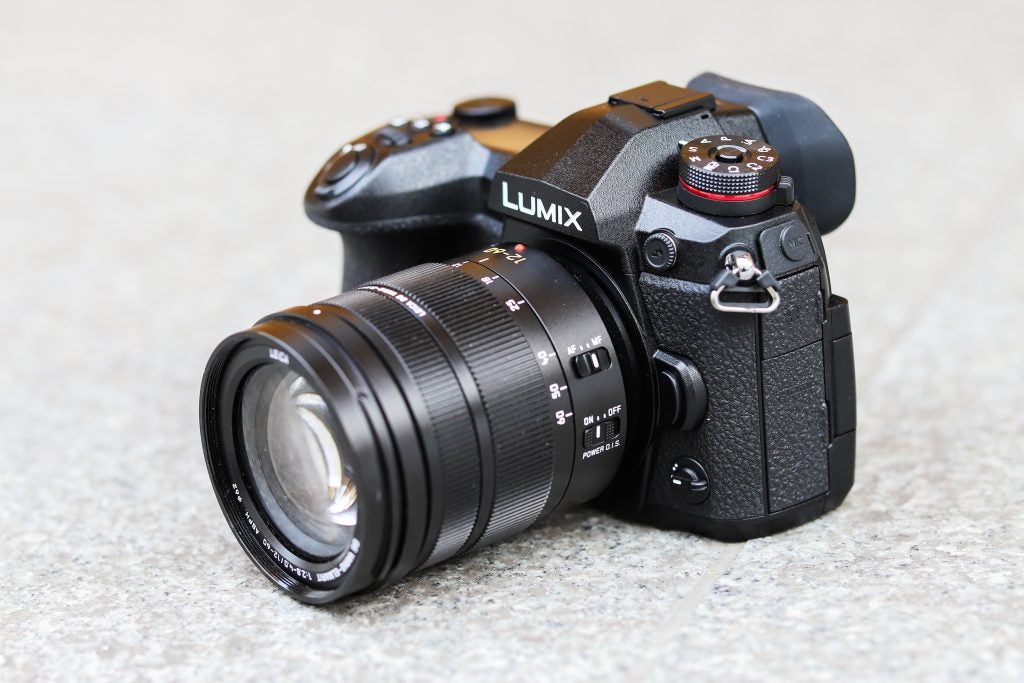
Panasonic’s flagship Micro Four Thirds camera is also aimed at wildlife and sports shooters, boasting 20fps at full resolution with full AF tracking (pipping the E-M1X’s 18fps to the post).
The G9 is a much smaller and lighter proposition than the E-M1X, and costs far less too. It doesn’t have the same extended battery life, or features such as Live ND, but it probably makes a lot more sense for the average photography enthusiast who doesn’t have a small fortune to spend.
Nikon D500
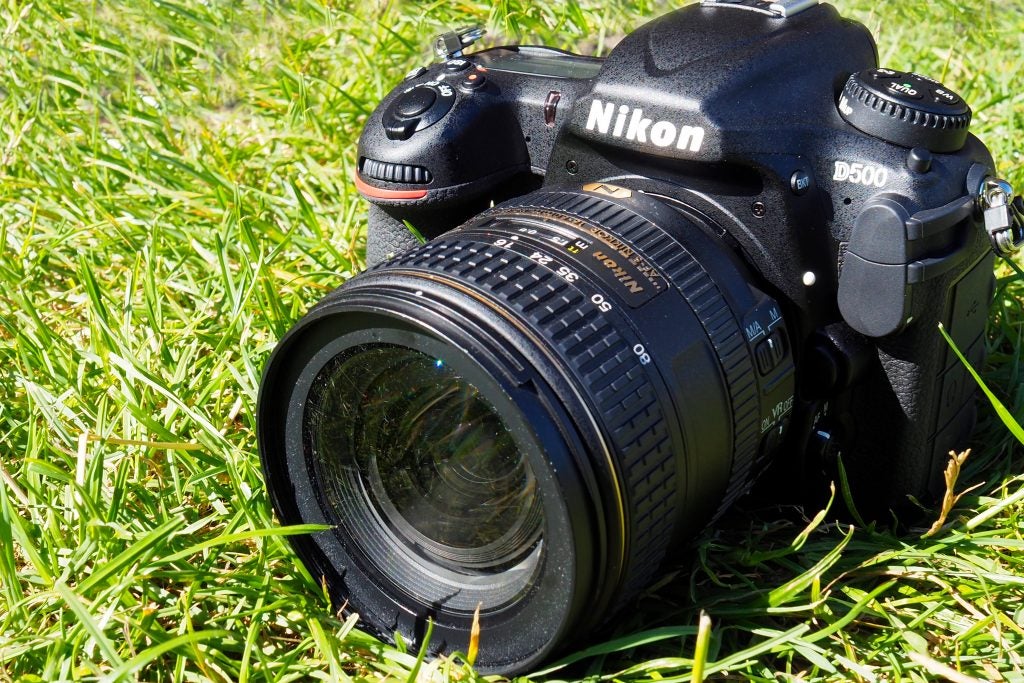
If wildlife and sports are your thing, and you’re not a professional, then Nikon’s D500 makes a lot of sense. It gives you 10fps shooting and a huge range of appropriate lenses from which to choose.
It’s bigger and heavier than most Micro Four Thirds models – but, with a bigger sensor, it’s also capable of producing better images in most situations.
Verdict
The OM-D E-M1X is a fantastic camera for those who like to shoot sports, wildlife and action. But at this price, it’s certainly in niche territory.
Trusted Score
Features
| Camera type | Mirrorless Camera |
| Megapixels (Megapixel) | 20.4 megapixel Live MOS Four Thirds |
| ISO settings | 200 - 25600 |
| LCD Monitor | 3-inch, fully-articulated, touch-sensitive, 1037k-dots |
| Viewfinder | 2.36m-dot, 0.83x magnification electronic viewfinder |
| Video (max res/format) | Cinema 4K |
Physical Specifications
| Dimensions Width (Millimeter) | 144.4 |
| Depth (Millimeter) | 75.4 |
| Length (Millimeter) | 146.8 |
| Weight (body only) (Kilogram) | 0.997 |

